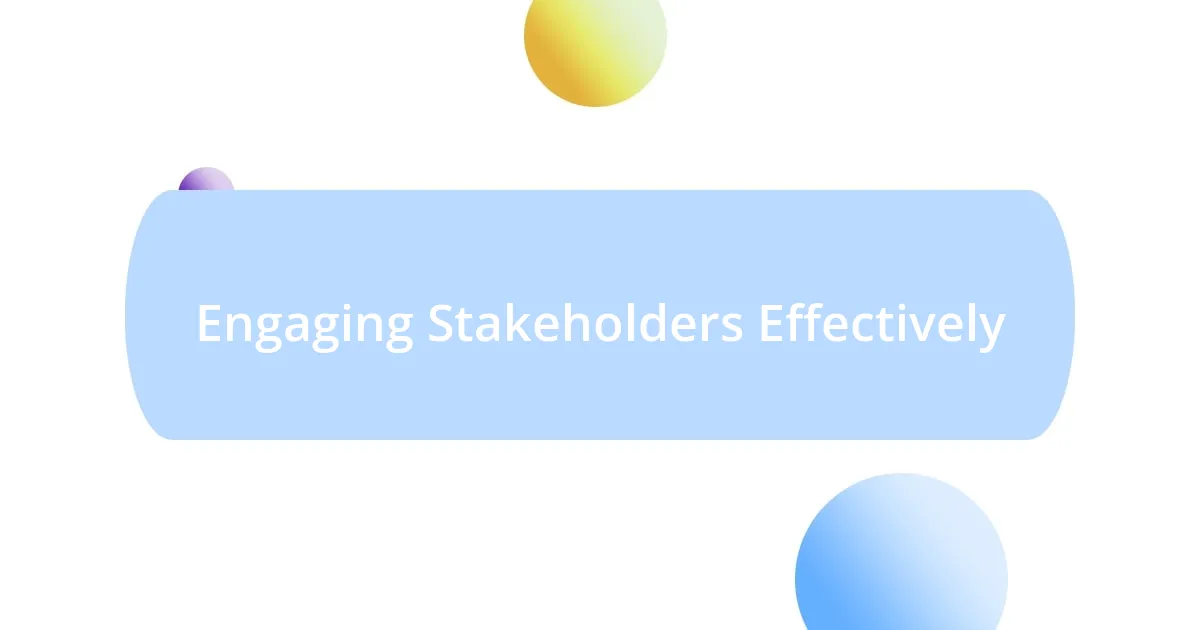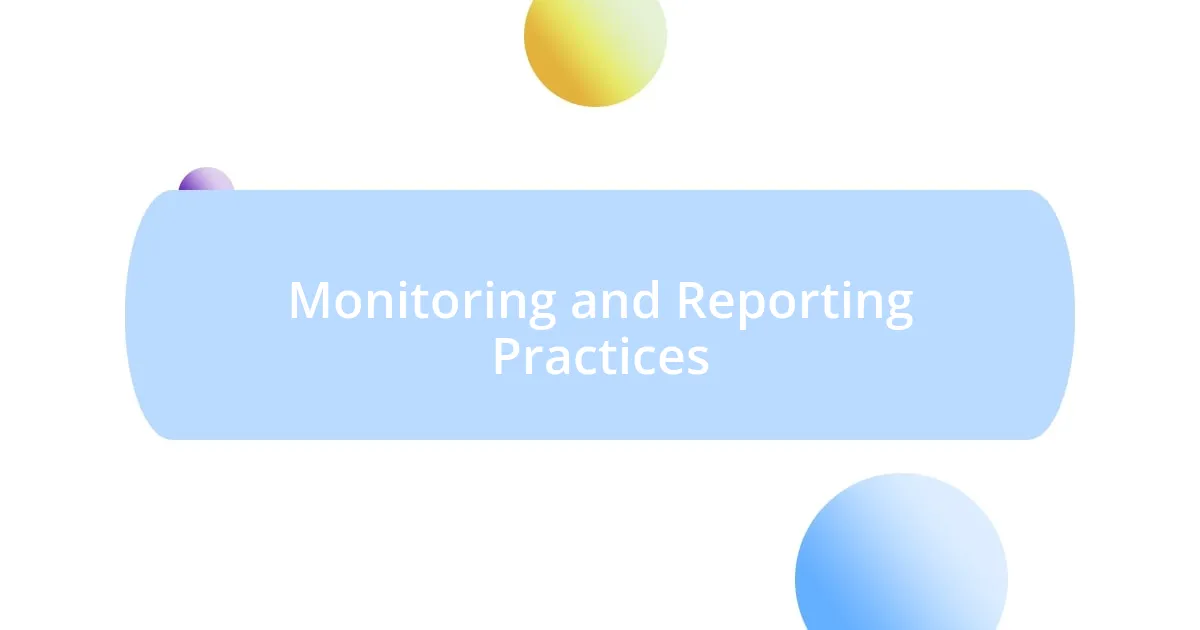Key takeaways:
- Donation transparency builds trust by openly sharing financial reports and showcasing the impact of contributions, enhancing donor connection to the cause.
- Effective communication strategies, such as regular updates and storytelling combined with data, help foster genuine engagement and a sense of community among donors.
- Technology, including real-time financial tracking and blockchain for accountability, empowers donors and reinforces their confidence in the impact of their contributions.
- Establishing feedback mechanisms and personalized outreach fosters deeper relationships, transforming donors from mere funding sources into engaged partners in the organization’s mission.

Understanding Donation Transparency
Donation transparency is all about knowing where your money goes when you contribute to a cause. I remember my first experience with charity fundraising; I excitedly donated, only to wonder later how much actually reached the intended recipients. It’s a nagging question: Are our donations truly making a difference, or are they getting lost in administrative costs?
The concept of transparency also goes beyond just tracking funds; it’s about building trust. When organizations openly share their financial reports, they invite donors into a partnership filled with accountability. I’ve seen organizations that not only provide financial statements but also real stories showcasing how contributions impact lives. Doesn’t it make you feel more connected to a cause when you can see the tangible results of your generosity?
Understanding donation transparency means recognizing its emotional weight. For me, donations are personal—they’re a reflection of my values and hopes for a better world. Yet, I often grapple with the doubt of whether my contributions echo my intentions. It’s not just about numbers; it’s about creating a narrative that makes every dollar count, ensuring donors feel a genuine connection with the missions they support.

Identifying Transparency Gaps
As I dove into the world of charitable donations, I quickly began to notice specific areas where transparency was lacking. In many instances, organizations failed to provide clear information on their financial allocations, leading to uncertainty among donors like myself about how funds were being used. This lack of clarity can create a disconnect, allowing doubts to fester in the minds of those willing to help.
To effectively identify transparency gaps, I found it useful to look for a few key indicators:
- Financial Statements: Are there readily available reports that detail income and expenses?
- Allocation of Funds: Is there a breakdown showing exactly how donations are utilized?
- Impact Reporting: Do organizations share compelling stories or data that demonstrate the effects of contributions?
- Communication Channels: How easily can I ask questions or obtain information, and are responses timely?
One organization I supported had a habit of sharing vague updates, causing me to question their commitment to transparency. When I reached out, I learned they hadn’t established a structured way to present their financials or achievements. That conversation lit a fire in me; there I realized how vital clear communication is to foster trust and encourage donors to remain engaged.

Implementing Clear Communication Strategies
Implementing clear communication strategies is essential for building trust with donors and ensuring that they feel valued. In my experience, I found that regular updates and transparent discussions about financial health can significantly enhance a donor’s sense of security. For instance, one charity I supported sent monthly newsletters that outlined where funds were allocated, accompanied by success stories from beneficiaries. This strategy not only informed me but also made me feel like an integral part of their mission.
I also realized that actively engaging donors through multiple channels, like social media or dedicated Q&A sessions, fosters a sense of community. I remember attending a live webinar organized by one nonprofit. They discussed their financial processes openly and encouraged feedback. It felt refreshing to be part of a dialogue where our questions were welcomed and addressed in real-time. This level of transparency made me much more inclined to support their future initiatives.
Finally, I learned that combining storytelling with data can be a powerful way to communicate impact. One organization shared a quarterly impact report that included infographics along with heartfelt testimonials from families they helped. This fusion of factual information and emotional narratives truly resonated with me, reinforcing the idea that each contribution makes a meaningful difference. I began to see not just the numbers, but also the real lives being changed behind those figures.
| Communication Strategy | Description |
|---|---|
| Regular Updates | Provides donors with consistent information about fund allocation and organizational progress. |
| Engagement Channels | Utilizes social media, webinars, and newsletters to encourage open dialogue with supporters. |
| Storytelling with Data | Combines emotional narratives with factual reports to create a compelling case for support. |

Using Technology for Transparency
The integration of technology in nonprofit organizations has profoundly changed how we approach transparency in donations. I still remember when a small charity I supported began using an online platform to showcase their financials in real-time. Being able to see exactly how and where my contributions were going, updated daily, not only put my mind at ease but also deepened my connection to their mission. Can you imagine how empowering it is to directly track the impact of your donations?
Moreover, utilizing blockchain technology has emerged as a game-changer for accountability. This secure and transparent method allows donors to verify transactions, ensuring funds are only spent as intended. I once contributed to a project that adopted this system, and I felt a new level of confidence in my giving. Knowing that every donation was traceable reassured me that my support was genuinely making a difference, which is such a vital aspect of donor trust.
Mobile apps have also played a critical role in enhancing transparency. I recall discovering an app that consolidated data from multiple nonprofits and presented their financial health and impact projects in an engaging format. Every time I opened that app, it reminded me that transparency isn’t just about numbers; it’s about feeling connected to the causes I care about. How often have you felt overwhelmed by choices in charitable giving? Technology can simplify that experience, allowing informed decisions while helping organizations build loyalty and trust.

Engaging Stakeholders Effectively
Engaging stakeholders effectively requires more than just disseminating information; it’s about creating an authentic dialogue. I remember a time when a nonprofit I followed invited me to participate in a stakeholder roundtable discussion. As we gathered to brainstorm fundraising ideas, I felt a genuine sense of collaboration. It was clear they valued our opinions, which made me more enthusiastic about contributing to their mission. Have you ever felt that urgency to support an organization that truly listens to you? It’s a motivating factor for many.
Another impactful strategy I’ve observed is creating feedback loops. In one instance, a charity I donated to conducted a survey after a fundraising event. They genuinely sought our insights on what worked and what could be improved. This proactive approach not only showed they cared but also made me feel invested in their growth and success. Engaging donors as partners rather than just sources of funding adds a layer of commitment that’s hard to replicate.
Lastly, I can’t stress enough how important it is to personalize outreach efforts. I experienced this firsthand when a nonprofit reached out specifically to acknowledge my past donations and how they’d made an impact. They shared stories about lives transformed because of our collective giving. Hearing those narratives stirred emotions within me, reinforcing why I chose to support them. Isn’t it incredible how a simple, heartfelt message can rekindle one’s passion for a cause? That’s the power of connecting on a personal level.

Monitoring and Reporting Practices
When it comes to monitoring and reporting practices, establishing a reliable feedback mechanism is essential. I remember when a nonprofit I worked with started implementing quarterly impact reports. Each report wasn’t just a data dump; it told a story, weaving together statistics with real-life testimonials from those we’ve helped. This approach transformed how I viewed my donations—no longer were they mere transactions, but rather investments in lives changed. How often do you get to see the direct outcome of your support?
Additionally, the use of dashboards for tracking donations and expenditures offered a level of insight that was truly eye-opening. I once attended a fundraiser where they showcased a visual dashboard that displayed real-time updates on funds raised and how they were allocated. It was fascinating to see not just numbers, but the tangible projects those funds were supporting. It made me think—what if all organizations adopted this? Wouldn’t it inspire confidence in more donors if they could visualize the impact their support had?
Lastly, consistency is crucial in reporting practices. I experienced a sense of trust build over time when my favorite organization committed to annual reporting. Their dedication to transparency made me feel valued as a donor, knowing I could count on them to keep me informed regularly. It reminded me that, at the end of the day, transparency is about building relationships. How can organizations expect loyalty if they aren’t willing to share their journey openly?

Evaluating Impact of Transparency
Evaluating the impact of transparency is essential for understanding how it shapes donor trust. I once had a conversation with a fellow donor who mentioned how seeing transparent reporting turned his skepticism into unwavering support. It struck me that transparency isn’t just about numbers; it fosters a sense of belonging. Have you ever felt more connected to a cause simply because you knew where your money was going?
Another vivid experience occurred during a community event where a nonprofit openly discussed the challenges they faced with funding allocation. They shared the difficulties of meeting project goals, while also showing how they adapted based on past donor feedback. This level of honesty not only resonated with me but also inspired my fellow attendees to engage more deeply with the organization. Do you think transparency in action could inspire a collective sense of purpose among donors?
Moreover, reflecting on my own involvement, I recall a time when a charity shared their results after a major fundraising drive. They didn’t shy away from discussing the setbacks faced along the way. This candid approach made me realize that transparency could act as a catalyst for organizational improvement. How often do we see that kind of vulnerability in the nonprofit world? It’s a reminder that genuine progress often arises from open communication and shared accountability.














